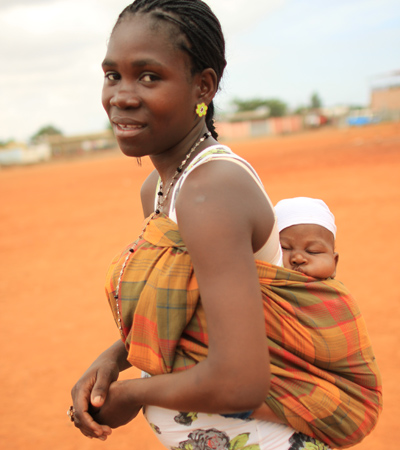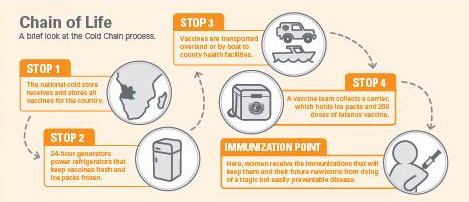
Maseo is four months old and is waiting to be weighed, measured and immunized at a vaccination site in the municipality of Kalumba Kiashi, Angola. (Credit: © UNICEF/PFPG2014P-0094/Clark)
We are in the final stretch of the Flu Campaign. This is the last week to get your flu shot and make a donation to a child in need through UNICEF Canada. This week, if you get your flu vaccine, we will donate two vaccines to UNICEF – with one vaccine for yourself, you can help two children.
We have donated over 10,000 vaccines so far, but we still have a ways to go in order to reach our 70 per cent goal. Make sure to choose prevention and protect yourself, your loved ones, our patients and (this week) two children with one flu shot.
Here's an example of how your flu shot can make a difference around the world:
Maseo is the youngest of mother Rosa's three children – all of them boys. He is four months old and is waiting to be weighed, measured and immunized at a vaccination site in the municipality of Kalumba Kiashi, Angola. Raising a healthy baby, let alone three, is hard in Angola, but Rosa is trying her best. Evidence of the civil war that ended in 2002 is all around. The standard of living is very low for most of the country and life expectancy is even lower. The country is one of eight with the lowest rates of vaccination, and infant mortality rates are amongst the highest in the world.
Rosa knows that if her children reach their fifth birthdays, it is a gift – one that is made possible thanks to donors like you, and the hard work of UNICEF field staff. Together, we are working to ensure that every child in Angola receives the life-saving immunizations they need to survive.
Vaccinations have become even more important here since news of a measles outbreak in Kalumba Kiashi. Further reports of cholera outbreaks around the country have also been making the news. Rosa knows from experience that vaccinations are imperative in order to protect her children. She protects herself by receiving her tetanus vaccine at the same time her children receive their vaccines.
"I feel like my children don't get as sick as other children," Rosa says.
Not everyone in her community is aware of the importance of immunization in preventing disease but she hopes that one day it will be the norm.
"We don't talk about it," she said. "Maybe we should."
"He has a card," she says pointing to Maseo's yellow vaccination card. "This helps us keep track of when we need to come again."
The story of Rosa and Maseo is just one example of how we are helping the hardest to reach children and their families in Angola.

This diagram illustrates how UNICEF helps get vaccines to remote areas around the world (Credit: UNICEF Canada)
By developing a strategy designed specifically for each community, called Reach Every District (RED), UNICEF is working with local leaders and organizations to map out and reach areas with high numbers of missed children. The RED strategy has made rapid progress and has already reached 97 of 164 municipalities.
With your support, we can reach all of the children in all of these districts. Together we can protect children against deadly diseases like measles and cholera. Our mobile teams will not stop until they reach every child, despite the challenges of getting to the most remote areas, because, like you, we believe that no child is too far.
This article was printed in the For Every Child UNICEF Canada Magazine, Fall 2014 edition. For more information, please visit
UNICEF Canada's website.
